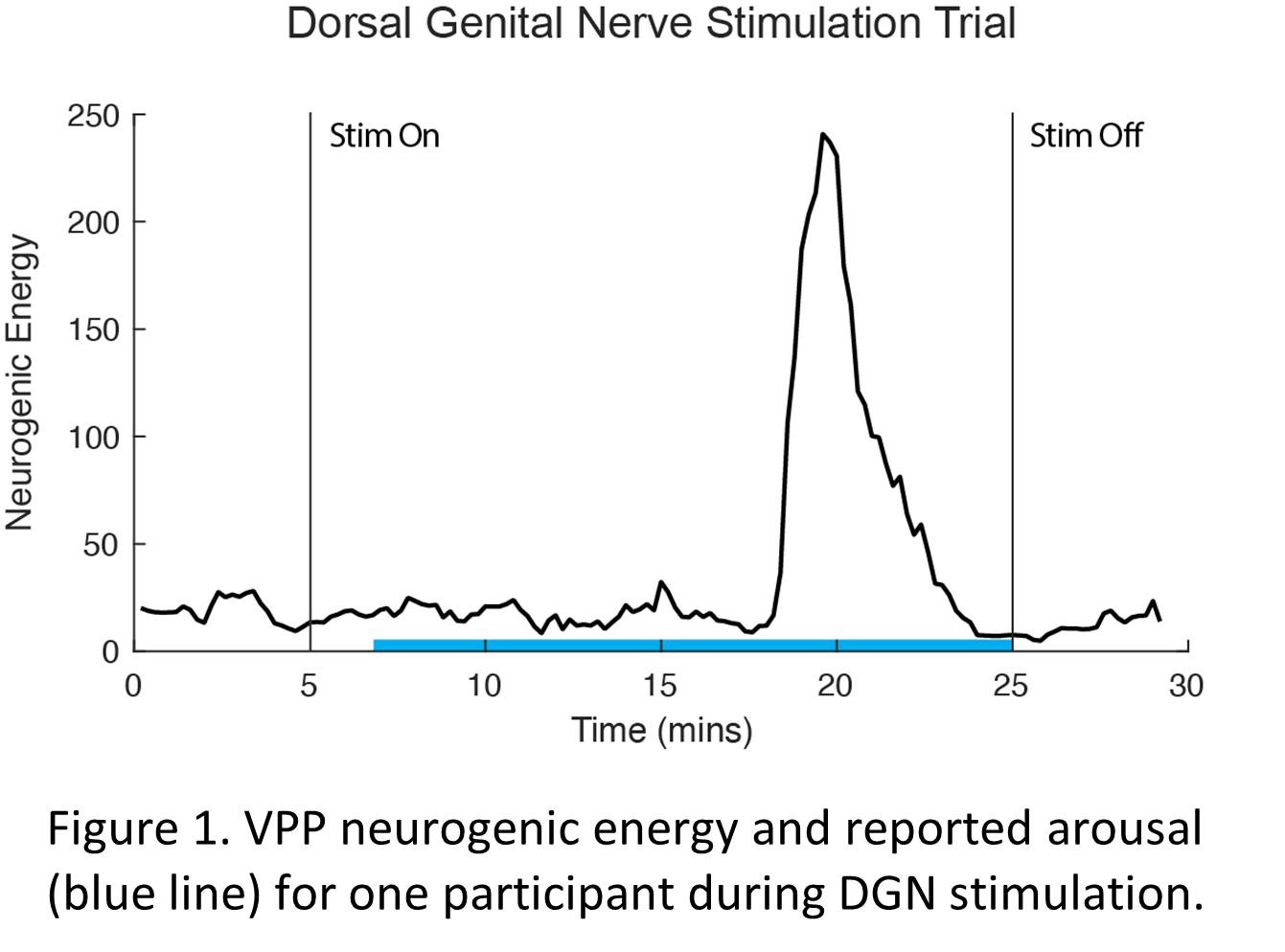Back
Introduction: Female sexual dysfunction (FSD) is a potentially life altering condition that impacts an estimated 40% of women. Unfortunately, the few treatment options available have limited success due to their high incidence of adverse events and inability to improve subjective arousal. One potential treatment option, peripheral neuromodulation, has been successful in improving female sexual function index scores. However, the underlying mechanisms of how neuromodulation improves FSD are still largely unknown. We hypothesize that improvements in FSD symptoms are due to improvements in genital hemodynamics.
Methods: We developed a clinical study to investigate changes in vaginal blood flow (VBF) in response to dorsal genital nerve (DGN) and tibial nerve stimulation in three cohorts of women: healthy controls, women with FSD, and women with spinal cord injury (SCI). Incorporating women with SCI allows us to investigate which neural pathways contribute to genital sexual arousal. Each participant attends two study visits: one for each nerve target, randomly ordered. At each visit, a vaginal photoplethysmography (VPP) sensor is used to measure blood flow during a 5-minute baseline, 20 minutes of nerve stimulation, and a 5-minute washout period. The VPP signals are filtered in the neurogenic energy frequency spectrum (0.76 – 0.20 Hz) for analysis.
Results: Seven out of eight participants reported genital sensations due to nerve stimulation, three of whom have SCI. One participant with a complete SCI had increases in their VPP neurogenic energy during dorsal genital nerve stimulation (Fig. 1). An animal study is being planned to investigate the VBF response observed in complete SCI.
Conclusions: This work provides further support for neuromodulation as a treatment for neurogenic and non-neurogenic FSD. SOURCE OF
Funding: Craig H. Neilsen Foundation and International Society for the Study of Women’s Sexual Health.

Moderated Poster Session
Session: MP27: Sexual Function/Dysfunction: Basic Research & Pathophysiology
MP27-13: PERIPHERAL NEUROMODULATION OF VAGINAL BLOOD FLOW: A POTENTIAL TREATMENT FOR FEMALE SEXUAL DYSFUNCTION
Saturday, April 29, 2023
7:00 AM – 9:00 AM CST
Location: S404C
- PG
Priyanka Gupta, MD (she/her/hers)
Associate Professor of Urology
University of Michigan
Poster Presenter(s)
Introduction: Female sexual dysfunction (FSD) is a potentially life altering condition that impacts an estimated 40% of women. Unfortunately, the few treatment options available have limited success due to their high incidence of adverse events and inability to improve subjective arousal. One potential treatment option, peripheral neuromodulation, has been successful in improving female sexual function index scores. However, the underlying mechanisms of how neuromodulation improves FSD are still largely unknown. We hypothesize that improvements in FSD symptoms are due to improvements in genital hemodynamics.
Methods: We developed a clinical study to investigate changes in vaginal blood flow (VBF) in response to dorsal genital nerve (DGN) and tibial nerve stimulation in three cohorts of women: healthy controls, women with FSD, and women with spinal cord injury (SCI). Incorporating women with SCI allows us to investigate which neural pathways contribute to genital sexual arousal. Each participant attends two study visits: one for each nerve target, randomly ordered. At each visit, a vaginal photoplethysmography (VPP) sensor is used to measure blood flow during a 5-minute baseline, 20 minutes of nerve stimulation, and a 5-minute washout period. The VPP signals are filtered in the neurogenic energy frequency spectrum (0.76 – 0.20 Hz) for analysis.
Results: Seven out of eight participants reported genital sensations due to nerve stimulation, three of whom have SCI. One participant with a complete SCI had increases in their VPP neurogenic energy during dorsal genital nerve stimulation (Fig. 1). An animal study is being planned to investigate the VBF response observed in complete SCI.
Conclusions: This work provides further support for neuromodulation as a treatment for neurogenic and non-neurogenic FSD. SOURCE OF
Funding: Craig H. Neilsen Foundation and International Society for the Study of Women’s Sexual Health.

